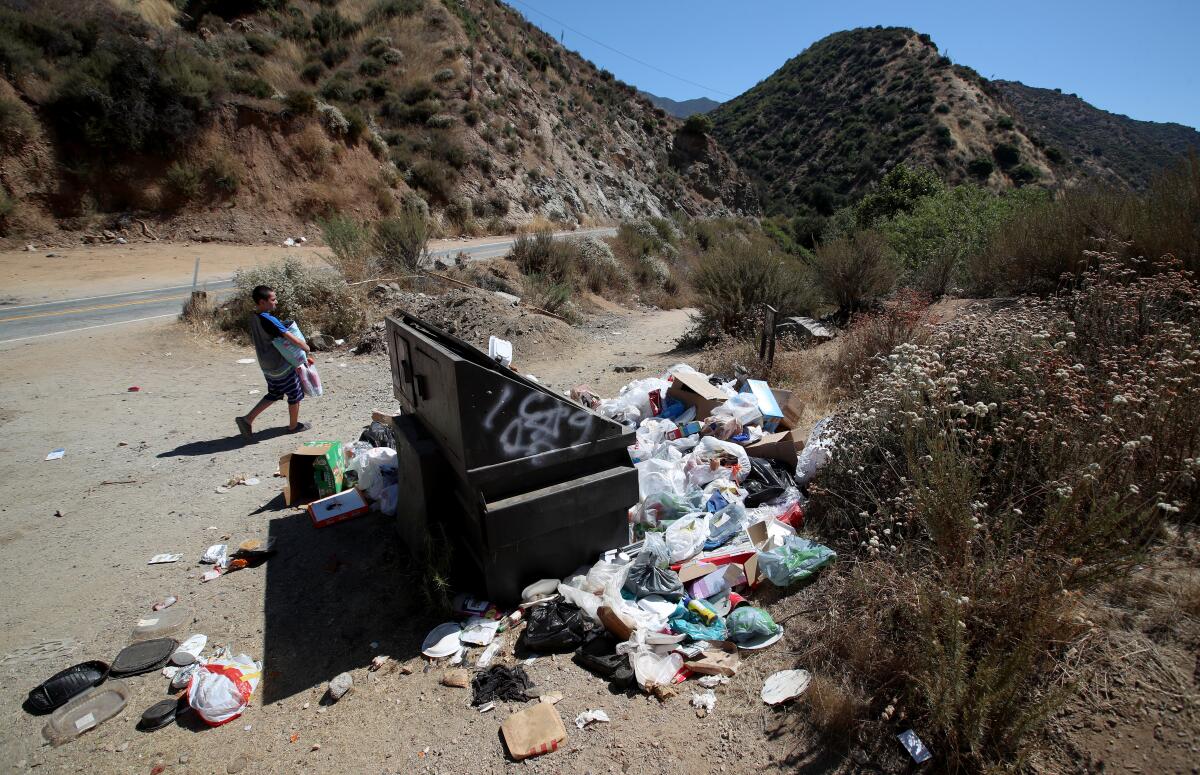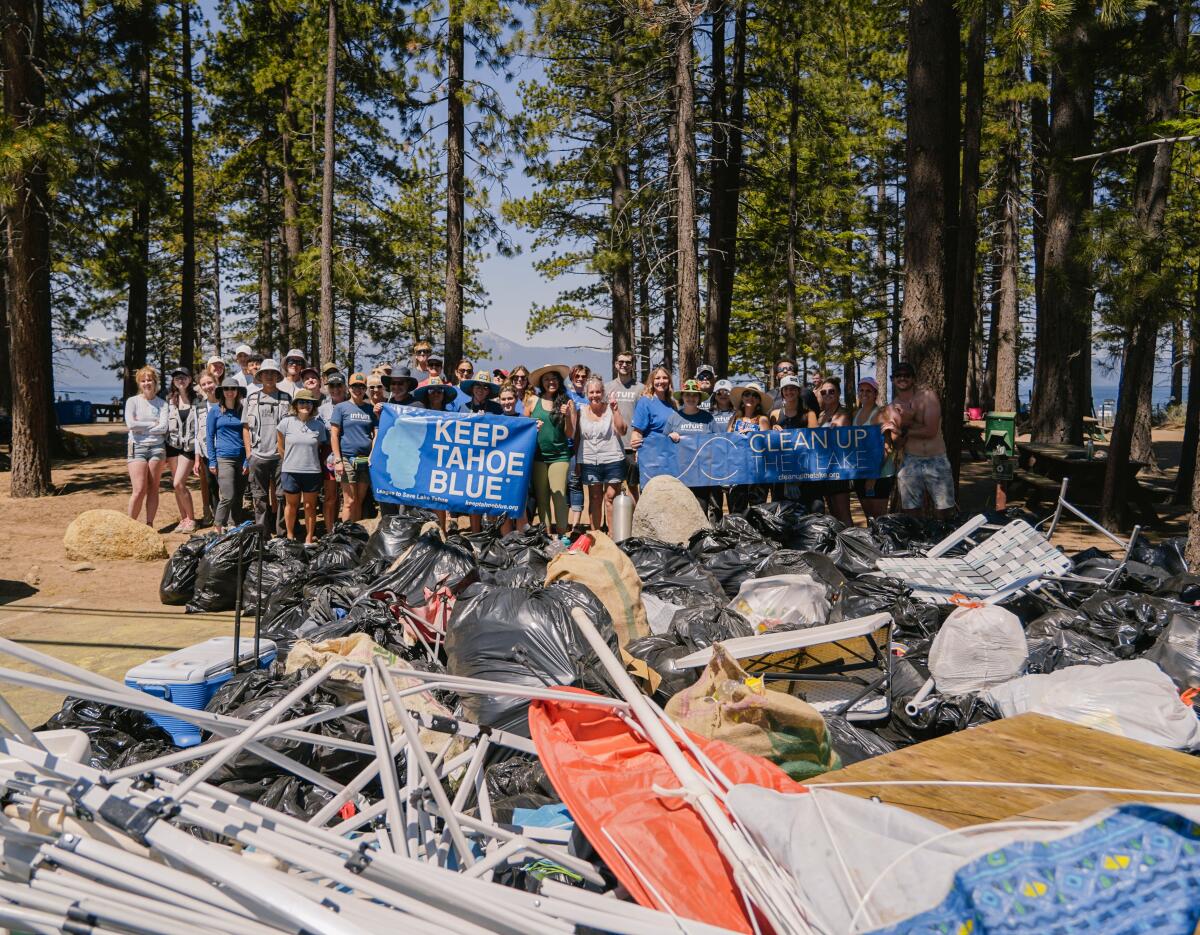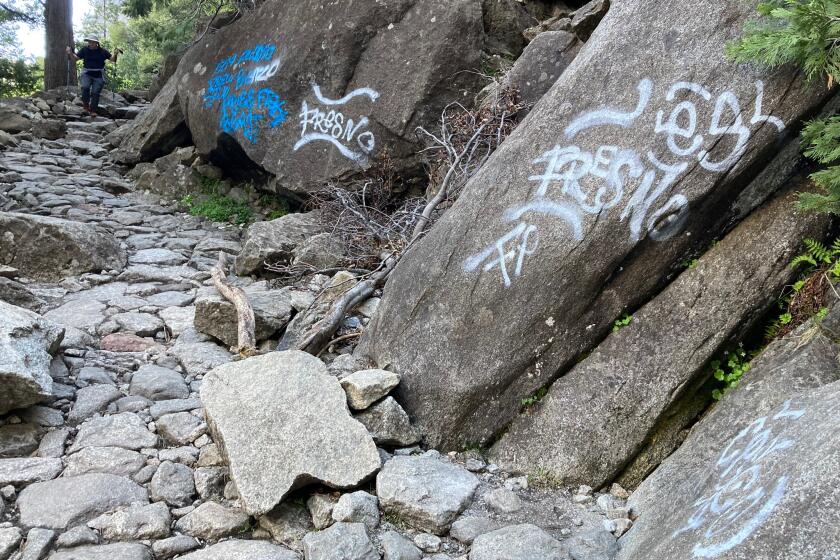Editorial: How to deal with California litter? One piece at a time

- Share via
The images of piles of trash left by visitors to the East Fork of the San Gabriel River in the Angeles National Forest in the L.A. Times last week were horrifying, on par with the gut-wrenching pictures of the 4 tons litter left on the shores and in the waters of Lake Tahoe during the Fourth of July weekend.
Though litter is a problem in general, the situation near the river in the San Gabriel Mountains has been unusually bad due to a confluence of events, according to Angeles National Forest officials: A hot spell left locals looking for cool relief, an exceptionally wet winter left the river flowing at alluringly high levels, and several maintenance jobs have been vacant (jobs the Forest Service is working to fill).
The shocking stories draw attention to something that should be clear to everyone who goes outside: California has become really, really trashy. How trashy? So much so that in 2021 Gov. Gavin Newsom launched Clean California, a $1.2-billion program to clean up “the streets of California like never before in the history of our state.”
What is it about the human condition that we will travel to a place of sublime natural splendor, and then trash it?
In February, Newsom’s office announced that Clean California programs had collected 1.3 million cubic yards of trash just from the sides of the state’s freeways. That’s both astonishing and dispiriting. There’s still so much trash in public spaces.
Just look around. There is garbage dumped in the gutters. Washed up on the beaches. Overflowing from trash cans. Cluttering up the sides of the freeways. Tossed in the bushes of parks and dropped along hiking trails. Broken furniture lies abandoned, well, just about anywhere. National Park Service workers recently discovered a couch dumped at a remote fire lookout spot in the Santa Monica Mountains.

Of course, of all the problems our communities are wrestling with at the moment, litter is not the biggest threat. But it is a hazard nonetheless. For one thing, strewn garbage attracts vermin, which can transmit disease. And litter begets more litter. What’s one more coffee cup, beer bottle, candy wrapper to add to the pile?
But it also fosters a sense of hopelessness. If we can’t even keep our streets clean, how can we stop climate change?
Happily, litter is also among the easiest environmental problems to solve, with just two steps that everyone can take: Pick up trash you see, and don’t add to the mess. The trash problem might lessen once the Forest Service administrators get those vacant positions filled.
But as the governor’s cleanup program shows, it’s going to take more than better staffed sanitation crews to reverse this unsightly trend. Litter is everyone’s problem, and waiting for someone else to take care of it hasn’t worked. If everyone picked up a single piece of litter each day on their block or at their local park, school or neighborhood on their way to work, school or the grocery store, it would transform California quickly.
We got here one piece of trash at a time. That’s how we deal with it too.
More to Read
A cure for the common opinion
Get thought-provoking perspectives with our weekly newsletter.
You may occasionally receive promotional content from the Los Angeles Times.











